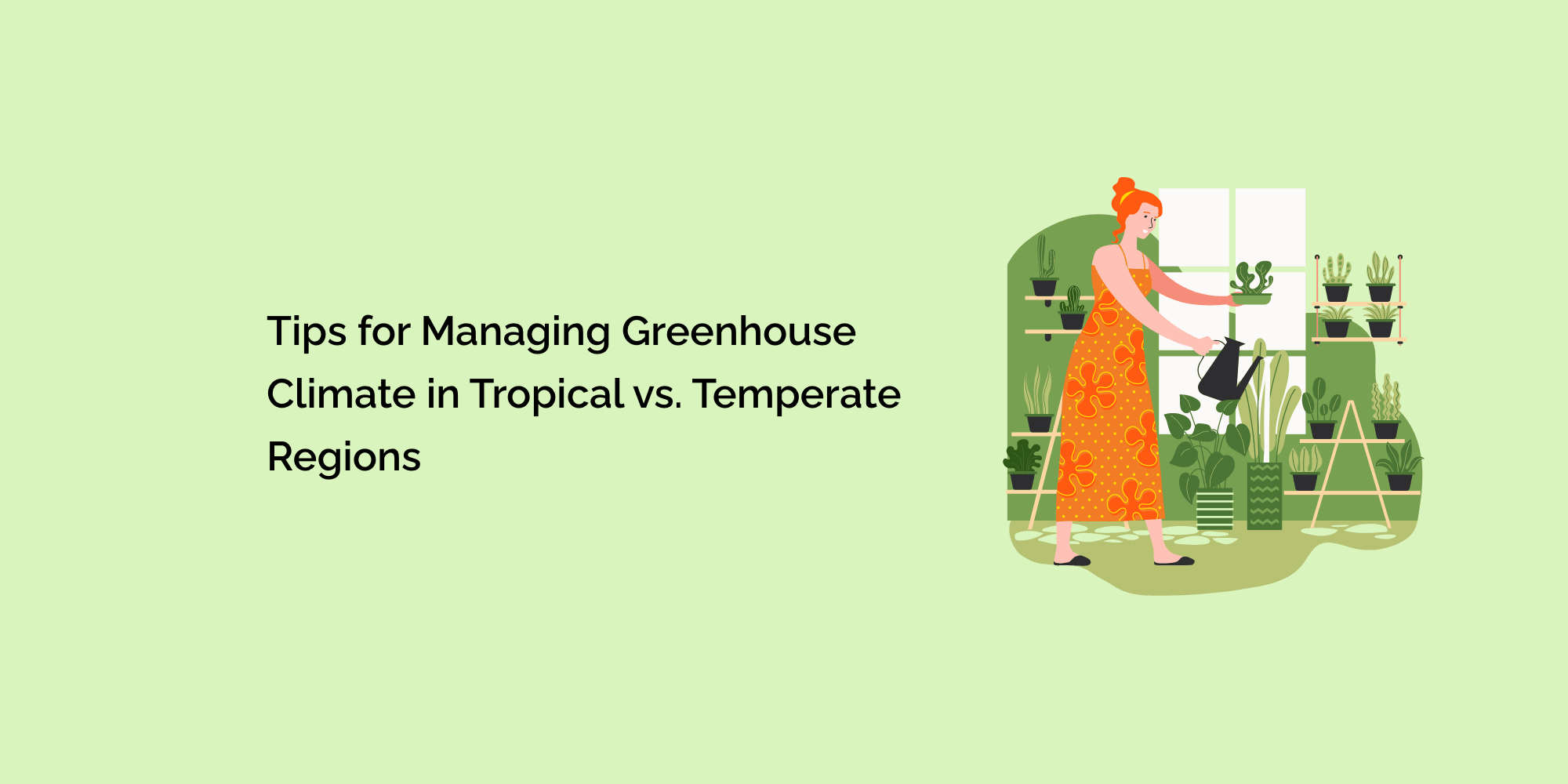Greenhouses are a universal tool for controlled cultivation, but managing their climates can differ significantly between tropical and temperate regions due to varying environmental conditions.
In this blog, we'll explore essential tips for effectively managing greenhouse climates in both of these distinct settings.
Greenhouse Climate Management in Tropical Regions
1. Shade Management:
- In tropical regions, excessive sunlight and heat can be challenging. Install shade cloths or shade nets to reduce light intensity and prevent overheating.
2. Ventilation:
- Good airflow is critical to prevent excessive humidity and stagnant air. Use natural ventilation through vents and fans to circulate air effectively.
3. Humidity Control:
- High humidity is common in the tropics and can lead to mold and disease. Install dehumidifiers or use natural ventilation to maintain humidity levels within the optimal range for your crops.
4. Pest and Disease Management:
- Tropical climates often favor the proliferation of pests and diseases. Implement stringent pest control measures, including regular inspections and the use of biological control agents.
5. Rainwater Collection:
- Take advantage of frequent rainfall by setting up rainwater collection systems. It's an eco-friendly way to provide water for your plants while conserving resources.
6. Tropical Plant Selection:
- Choose plant varieties that thrive in high humidity and warm temperatures, such as tropical fruits, orchids, and some herbs.
Greenhouse Climate Management in Temperate Regions
1. Heating Systems:
- In temperate regions, maintaining warmth during colder seasons is vital. Invest in efficient heating systems like radiant heaters to keep temperatures consistent.
2. Insulation:
- Adequate insulation can help conserve heat and reduce energy costs. Ensure that the greenhouse structure is well-insulated, including walls and ceilings.
3. Ventilation and Cooling:
- While heating is crucial in winter, proper ventilation is equally important in summer to prevent overheating. Use exhaust fans, louvers, and automatic vent openers for temperature control.
4. Winterization:
- Prepare your greenhouse for winter by sealing gaps, insulating pipes, and using thermal screens to trap heat.
5. Soil Heating:
- To encourage root growth during cooler seasons, consider using soil heating cables or mats to maintain soil temperature.
6. Temperate Plant Selection:
- Choose cold-hardy plants suited for temperate climates, such as tomatoes, peppers, and leafy greens. Consider crop rotation to make the most of your greenhouse year-round.
Universal Tips for All Greenhouses
1. Monitoring Systems:
- Install climate monitoring systems that track temperature, humidity, light levels, and other parameters. These systems provide real-time data and can be adjusted remotely.
2. Shade and Energy-Efficient Technologies:
- Incorporate energy-efficient technologies like LED grow lights and thermal curtains, regardless of your region, to reduce energy costs and improve climate control.
3. Regular Maintenance:
- Regularly inspect your greenhouse for leaks, damaged equipment, and blocked ventilation. Promptly address any issues to maintain an optimal climate.
4. Data-Driven Decision-Making:
- Keep detailed records of your greenhouse's climate conditions and crop performance. Analyze this data to make informed decisions and fine-tune your climate control strategies.
5. Consult Local Experts:
- Seek advice from local agricultural extension services or experienced greenhouse growers in your area. They can provide valuable insights specific to your region.
Conclusion
Managing greenhouse climates in tropical and temperate regions presents distinct challenges and opportunities. In tropical regions, focus on shade management, ventilation, and humidity control to combat excessive heat and humidity.
In temperate regions, prioritize heating systems, insulation, and ventilation to cope with seasonal temperature variations. However, some universal principles apply to all greenhouses: investing in monitoring systems, energy-efficient technologies, regular maintenance, data-driven decision-making, and seeking local expertise.
By tailoring your greenhouse climate management strategies to your specific region and crop selection, you can optimize conditions for healthy plant growth and maximize your agricultural yield.
Whether you're in the lush tropics or the cooler temperate zones, the greenhouse remains a powerful tool for controlled cultivation, fostering a year-round supply of fresh and bountiful produce.








